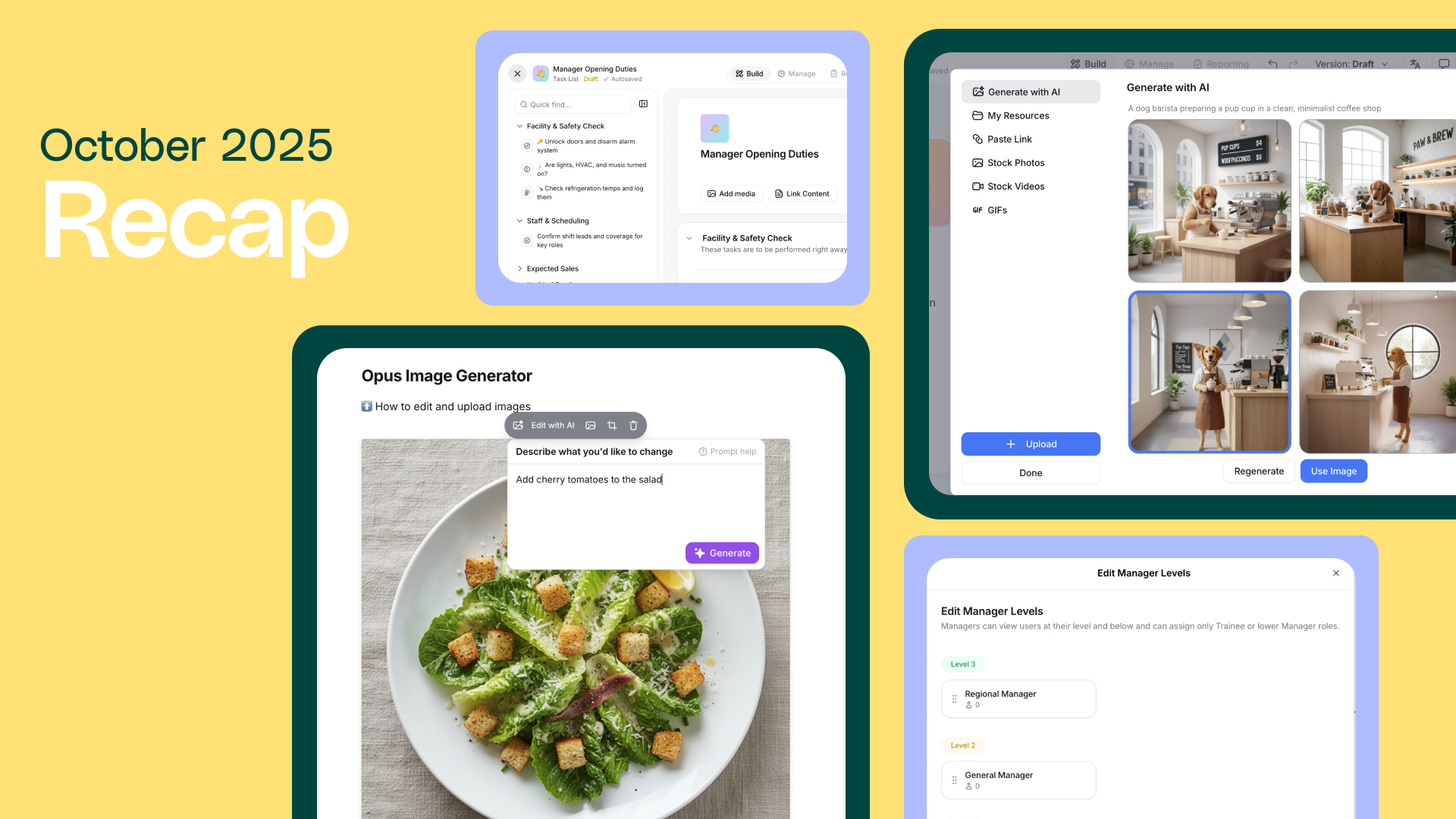In learning & development, video has emerged as a quintessential tool, offering a dynamic avenue to enhance accessibility and engagement. With its ability to demonstrate, model, and connect, video has gone from a “nice to have” to a “must have” of modern training initiatives. Let's dive into why video is indispensable and explore how to overcome common challenges in creating video content.
Why Creating Training Videos is Essential for Effective Learning
According to a study conducted by Degreed, 53 percent of workers learn new information or skills from watching a video from an expert every video. Video shines brightest in scenarios where demonstration and modeling are most important, particularly in in-person training settings. Whether it's mastering hard skills like food safety protocols or honing soft skills such as communication and leadership, video provides a vivid and immersive learning experience. Leveraging video to showcase messages from organizational leaders fosters credibility and cultivates a personal connection with learners, amplifying the impact of training initiatives.

Strategies for Overcoming Common Challenges in Creating Training Videos
While the benefits of video are undeniable, many learning and development professionals cite common challenges that hinder its adoption:
Expense: In the past, producing high-quality videos was perceived as prohibitively expensive and out of reach for scrappy L&D teams. However, as the landscape has evolved, with an array of tools and resources tailored for smartphone users, significantly reducing production costs.
Skill Gap: The misconception that video production requires specialized skills has deterred many from venturing into this domain. With user-friendly apps and platforms flooding the market, creating compelling videos has never been more accessible to novices.
Time Constraints: Time scarcity often emerges as a stumbling block, with professionals juggling multiple responsibilities. However, streamlined workflows and simplified editing processes streamline video production, making it feasible even amidst busy schedules.
Key Tips for Efficiently Producing Short Training Videos
Getting started with video creation may seem daunting, especially when you’re creating content for team members who are going to digest this content as just one piece of their training. Here are some best practices to ensure your video content is engaging and impactful:
- Keep It Concise: Short-form videos, ranging from 30 seconds to 3 minutes, resonate most with modern learners who crave bite-sized content that fits into their busy lives.
- Focus on Learning Objectives: Center each video around a single learning objective to maintain clarity and coherence, avoiding cognitive overload.
- Embrace Storytelling: Even in brief snippets, consider the context of your video, the impression you want your audience to have, and the arc of the story (or lesson) you’re trying to teach.
- Prioritize Accessibility: Ensure that your videos are accessible to all learners by providing subtitles or captions. This not only aids comprehension but also accommodates diverse learning preferences.
Already invested in video training? Opus’ mobile-first experience automatically translates video subtitles ensuring accessibility. See it for yourself by booking a demo.

Top Tools for Jumpstarting Your Training Video Library
As the landscape for video-based content creation expands, so does the market for user-friendly tools and platforms. The best part? Most of these tools are designed to be used within your smartphone.
Synthesia: This desktop application empowers users to generate AI-powered videos with customizable avatars, offering a novel approach to content creation.
TikTok: Leveraging the viral appeal of short-form videos, TikTok provides a platform for creating engaging and shareable content, perfect for microlearning initiatives.
Canva: Beyond just graphic design, Canva offers intuitive, basic video editing features, enabling users to craft visually stunning videos with ease.
Splice: Developed by GoPro, Splice is a user-friendly mobile app that facilitates seamless video editing and customization on the go.
Vimeo Create: Designed for simplicity, Vimeo Create offers a suite of tools for crafting polished videos, complete with customizable templates and royalty-free music.
💡 Opus ensures that your video content is delivered with automated closed captioning, full screen compatibility across any device, and editable subtitles across Spanish, French, Portuguese, and Khmer.
When considering a multimedia format that can bridge the gap between age gaps and learning styles, video stands as a powerful ally offering a potent format to impart knowledge, foster engagement, and drive meaningful learning outcomes. By embracing the storytelling of video and getting a firm understanding of just a few basic tools, learning and development leaders can captivate learners and create more engaging and innovative training.
Hungry for more? This article is part of a three-part guide on how to effectively use multimedia in your training program:







